My Lawn Turned Brown—Is It Dead? Your Guide to Bringing Grass Back to Life
I’ve seen it a thousand times. A homeowner calls in a panic, pointing at their lawn that’s gone from lush green to a crunchy, brown mess. The first thing they always say is, “It’s dead, isn’t it?” And almost every single time, my answer is a calm, “Probably not.” A brown lawn isn’t usually dead; it’s just being a drama queen. It’s gone dormant, which is its natural defense against stress like scorching heat or a lack of water.
In this article
Bringing that grass back isn’t about some miracle spray you see in infomercials. It’s about playing lawn detective. You have to figure out why it’s stressed and then give it what it actually needs. Forget the quick fixes. We’re going to walk through this the way the pros do, focusing on building a genuinely healthy lawn from the soil up. This is about creating grass so resilient it can laugh off the next heatwave.
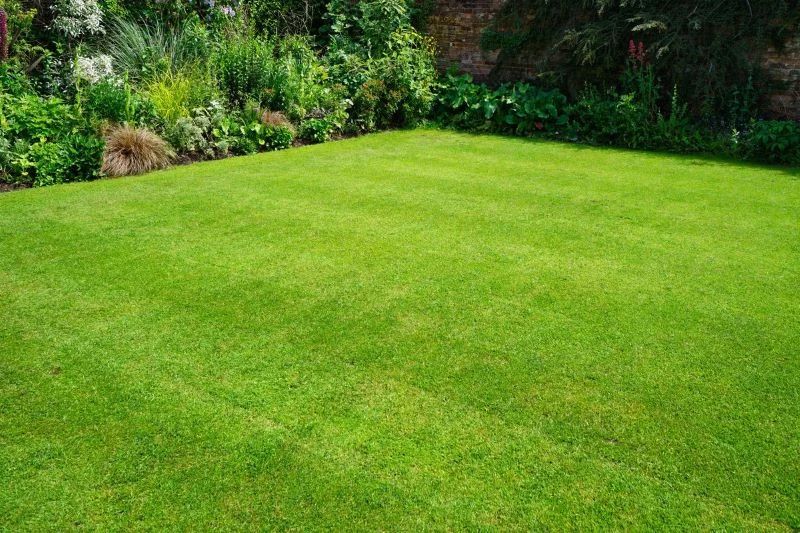
First Things First: Is It Dormant or Actually Dead?
Before you spend a single dollar or ounce of effort, you have to answer this one question. Dormancy is a nap; death is, well, final. During dormancy, the grass plant shuts down its top growth to pour all its energy into keeping its roots and crown alive. The crown is that critical little hub at the soil line where new grass blades grow from. If the crown is alive, you’ve got a fighting chance.
Here’s how to tell the difference:
- The Tug Test: This is my go-to move. Grab a handful of the brown grass and give it a firm, steady pull. If it resists and holds tight, the roots are still anchored and alive. The lawn is just dormant. But if the whole clump pulls out easily, with no resistance at all, the roots are gone. That patch is dead.
- Check the Crown: Get down on your hands and knees for a closer look. Part the brown blades and inspect the very base of the plants. A living crown will often have a hint of green or a pale, whitish-yellow color and feel firm to the touch. A dead crown is just brown, black, or shriveled and might feel brittle or even mushy.
- The Water Test: Still not sure? Pick a bad-looking patch and give it a little water every morning—just 10-15 minutes with a sprinkler—for about four or five days. If the lawn is dormant, you should see tiny green shoots starting to poke through. If a week goes by with zero change, that area is likely a goner.
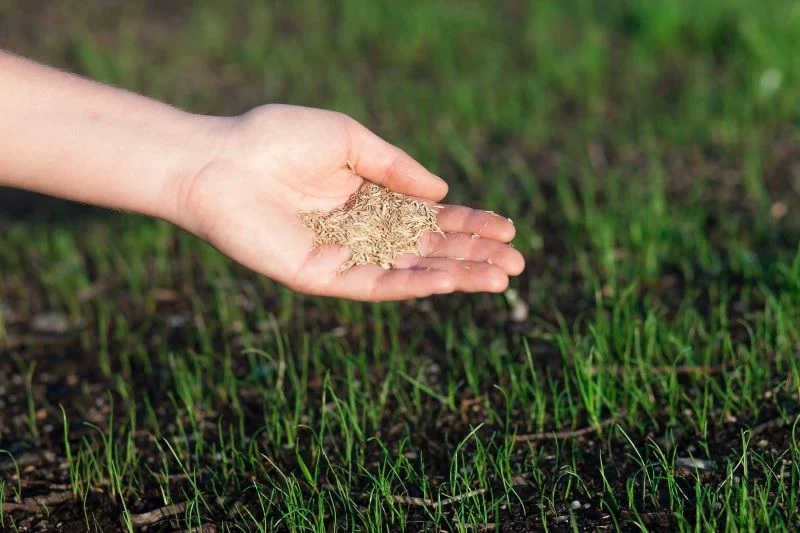
If your lawn passes these tests, great! You can bring it back. If you find large dead patches, you’ll need to reseed those spots, but we’ll get to that.
Let’s Talk About the Foundation: Your Soil
You don’t grow a great lawn; you build great soil, and the lawn follows. Your soil is the entire support system, and if it’s in bad shape, your grass will always be the first on the block to struggle. There are usually three culprits behind poor soil.
1. Compaction: The Silent Squeezer
Foot traffic, heavy mowers, and even just rain can slowly press soil particles together, squeezing out the air pockets. Roots need those pockets to breathe (yes, they breathe!) and to create channels for water and nutrients. In compacted soil, roots stay shallow, making your lawn incredibly vulnerable to drought.
Quick Tip: The Screwdriver Test. When the soil is a bit damp, try pushing a regular screwdriver into your lawn. If you can’t easily push it in at least 4-6 inches, your soil is compacted. It’s as simple as that.
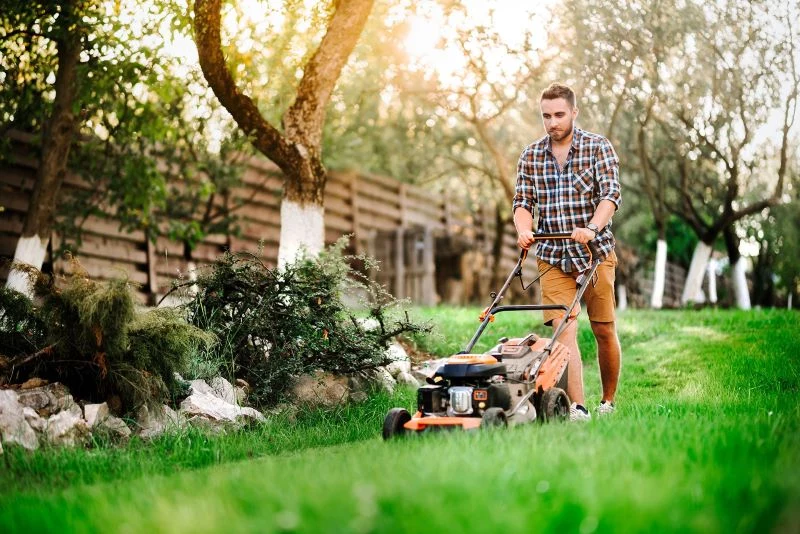
2. The Thatch Problem
Thatch is a layer of dead stems and roots that builds up between the soil and the green grass. A thin layer (less than half an inch) is fine and acts like a natural mulch. But when it gets too thick, it becomes a waterproof mat that suffocates the soil, blocking water and fertilizer. I’ve seen thatch layers so thick they basically strangle a lawn.
3. Poor Nutrition and pH
Grass needs a balanced diet of Nitrogen (for green growth), Phosphorus (for roots), and Potassium (for overall health). The soil’s pH level determines whether the grass can actually absorb these nutrients. Most grasses like a pH between 6.0 and 7.0. If your soil is too acidic or alkaline, you can dump fertilizer on it all day, but the nutrients will stay locked up and unavailable to the plant. It’s like having a fridge full of food but no key to open it.

The Action Plan: Reviving Your Stressed Lawn
Okay, detective work is done. Now it’s time to act. These are the foundational steps to coax your lawn out of its slumber.
Step 1: Water the Right Way (Deeply and Infrequently)
This is where most people go wrong. Watering for 10 minutes every day is one of the worst things you can do. It trains the roots to stay near the surface, where they’ll dry out instantly when it gets hot. The goal is to water deeply to encourage deep, resilient roots.
Your lawn needs about one inch of water per week, from rain or you. How do you measure that? Easy. Place a few empty tuna cans around your lawn and turn on the sprinkler. Time how long it takes to fill them with an inch of water. That’s your magic number. Water all at once, maybe once or twice a week. This sends moisture deep into the soil, and the roots will follow. And by the way, the best time to water is the early morning (between 4 a.m. and 9 a.m.) to minimize evaporation and prevent fungus.
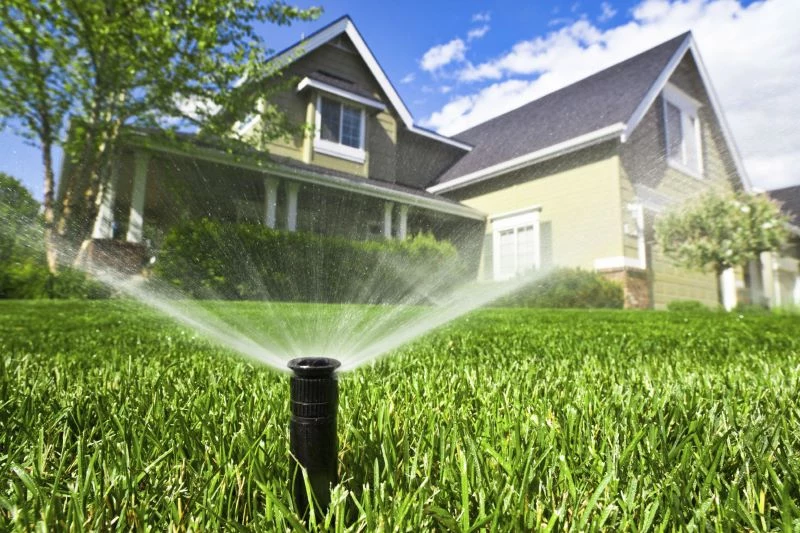
Step 2: Mow High and Let It Fly
Everyone loves a short, tight cut, but it’s incredibly stressful for the grass. The blade is the plant’s food-making factory. When you scalp it, you’re crippling its ability to recover. Taller grass blades mean deeper roots, period.
So, raise your mower deck! For most common lawn types like Fescue and Bluegrass, a height of 3 to 4 inches is perfect. A good rule is to never cut off more than one-third of the grass blade at a time. Oh yeah, and make sure your mower blade is sharp. A dull blade tears the grass, leaving ragged wounds that invite disease. You should be sharpening your blade after every 10-12 hours of use. It makes a massive difference.
And what about the clippings? Let them lie! This is called “grasscycling.” Those clippings are mostly water and are packed with nitrogen. They break down quickly and act as a free, natural fertilizer. It’s a myth that they cause thatch.
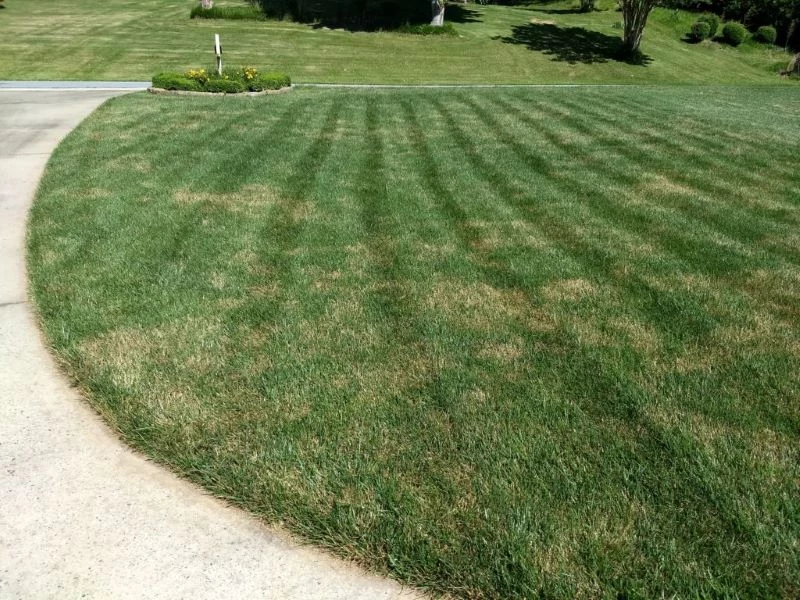
When Your Lawn Needs a Little More Muscle
If proper watering and mowing aren’t quite enough, it’s time to physically fix the soil. These are more intensive jobs, so timing is key.
Core Aeration: Let Your Soil Breathe
If the screwdriver test failed, you need to aerate. This is the single best thing you can do for a struggling lawn. A core aerator pulls small plugs of soil out of the ground, relieving compaction and creating channels for air, water, and nutrients to finally reach the roots.
This is where you can get the most bang for your buck. The absolute best time to spread grass seed and a thin layer of compost is right after you aerate. Those holes are perfect little pockets that protect the seed and funnel nutrients right down to where they’re needed most. Don’t miss this opportunity!
Good to know: You can rent a core aerator from a place like Home Depot for about $70-$100 for a half-day. Or, you can hire a local lawn service to do it for you, which might run between $150 and $250 depending on your lawn size. Honestly, for the back-breaking work it saves, hiring a pro is often worth it.
Dethatching: Removing the Smothering Blanket
If you have more than a half-inch of thatch, it’s time to get it out. A power rake (or verticutter) is the tool for the job. It slices through the thatch and pulls it up to the surface for you to rake away.
Heads up! Dethatching is extremely aggressive. You should only do it when your lawn is actively growing and healthy enough to recover (early fall or late spring). NEVER dethatch a dormant, brown lawn in the middle of summer. You will shred what little life is left in it—I’ve seen it happen, and it’s not pretty.
The Nuclear Option: A Full Lawn Renovation
Sometimes, if more than 50% of your lawn is truly dead, it’s just easier to start over. It sounds intimidating, but it gives you a clean slate to fix deep-seated issues once and for all.
1. Get a Soil Test. I can’t say this enough. Before you do anything, get a soil test from your local university cooperative extension. It costs between $15 and $30 and the report will tell you exactly what your soil needs—lime, nutrients, organic matter. It takes all the guesswork out of the process.
2. Start Fresh. You’ll need to eliminate all the old, patchy grass and weeds. You can use a non-selective herbicide (follow all safety instructions!) or go the non-chemical route with solarization by covering the area with clear plastic for a few weeks in summer to bake everything.
3. Prep the Bed. Once everything is gone, it’s time for the hard work. Plan for this to take a full weekend. You’ll need to till the soil 4-6 inches deep and work in the amendments from your soil test report, like compost to add organic matter or lime to adjust the pH. Your basic shopping list here will include top-quality grass seed, starter fertilizer, and compost. For tools, you’ll likely need to rent a tiller and a spreader.
4. Seed and Feed. Choose a high-quality seed blend that’s right for your climate and sun exposure—don’t cheap out on seed! Spread the seed evenly, rake it lightly into the top quarter-inch of soil, and then apply a starter fertilizer that’s high in phosphorus for root growth.
5. Water, Water, Water. This is the most critical phase. You must keep the top layer of soil consistently moist until the seeds sprout. This might mean watering lightly 2-3 times a day for a few weeks. Once the grass is established, you can switch back to that deep and infrequent watering schedule we talked about.
A lush, green lawn isn’t a mystery; it’s a system. By focusing on soil health and giving your grass what it actually wants, you create an environment where it can’t help but thrive. A brown lawn is just a cry for help, and now you know exactly how to answer.
Inspirational Gallery
Is it a good idea to fertilize a brown lawn right away?
It’s a tempting but dangerous move. Applying a high-nitrogen fertilizer to dormant, heat-stressed grass is like forcing a sleeping person to run a marathon—it can cause severe chemical burns. Wait until you see consistent green growth returning. When you do fertilize, choose a slow-release, low-nitrogen formula or an organic product like Milorganite, which nourishes the soil without overwhelming the delicate new growth.
Over 50% of residential outdoor water use goes to lawns, and nearly half of that is wasted due to inefficient methods.
This is where smart sprinkler controllers, such as the Rachio 3 or Orbit B-hyve, become a lawn’s best friend. By using local weather data, they automatically adjust watering schedules, preventing overwatering on cool days and ensuring a deep soak before a heatwave. It’s the ultimate ‘set it and forget it’ tool for preventing future drought stress.
The single most important mowing adjustment for lawn health: Mow high. Setting your mower to one of its highest settings (3 to 4 inches for most cool-season grasses) is crucial. Taller grass blades create more shade for the soil, keeping it cooler and reducing water evaporation. It also encourages deeper root growth, making your lawn far more drought-tolerant. A short, scalped lawn is a stressed lawn waiting to happen.
Core Aeration: This method uses a machine to pull small plugs of soil out of the lawn. It’s highly effective for relieving heavy compaction, allowing water, air, and nutrients to penetrate deep into the root zone.
Spike Aeration: This simply pokes holes in the ground. While better than nothing, it can actually increase compaction around the holes.
For a lawn recovering from severe stress, core aeration is the professional’s choice for a real reset.
When overseeding dead patches, don’t just grab any bag of seed. Choose a variety known for its resilience. This is your chance to build a tougher lawn.
- Tall Fescue: The champion of drought resistance among cool-season grasses due to its incredibly deep root system. Look for modern Turf-Type Tall Fescue (TTTF) varieties.
- Bermuda Grass: A warm-season option that is extremely tough, thrives in heat, and recovers quickly from stress.
A healthy lawn is built on healthy soil. If your grass constantly struggles, the underlying issue is likely poor soil structure that can’t retain moisture. The long-term fix isn’t just more water; it’s improving the soil itself. After aerating, spread a thin layer (about 1/4 inch) of high-quality compost. This organic matter acts like a sponge, holding water and nutrients right where the roots need them most.
- Reduces the need for chemical fertilizers.
- Improves water retention, cutting down on watering bills.
- Breaks up compacted clay and adds body to sandy soils.
The secret to these benefits? An annual top dressing. A thin layer of finely screened compost feeds the soil’s microbial life, creating the perfect foundation for lush, resilient turf.
A lawn’s root system can be two to three times larger than the green grass you see on top. Neglecting the roots is neglecting the entire plant.
If a patch of grass pulls up easily like a piece of carpet, don’t just blame the heat. You might have grubs. To check, cut a square-foot flap of turf on three sides and peel it back. If you see more than five C-shaped white grubs, you’ve found your culprit, and a targeted treatment like Scotts GrubEx may be necessary before new seed can establish.
Waking up a dormant lawn requires a gentle touch, not a flood. Think slow and deep to encourage roots to search for moisture.
- Water early in the morning (4-6 AM) to reduce evaporation.
- Aim for 1 to 1.5 inches of water per week, delivered in one or two deep soakings, not daily sprinkles.
- Use a simple, empty tuna can on the lawn to measure how long it takes your sprinkler to deliver one inch of water.










